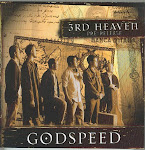Jeannie Harmon was the wonderful editor who worked with me on my first picture book, Psalms for a Child’s Heart. Jeannie is also my dear friend (o:
To link to this GREAT 171 page e-book resource go to: http://www.FabJob.com/childauthor.asp?affiliate=262
Enjoy the excerpt on getting ideas for stories! Here it is:
GET IDEAS DOWN ON PAPER
As adults we often forget the amazing awe of learning something for the first time. We go about our lives in the “fast mode” and often miss the wonder that stops a child in his tracks to watch a caterpillar cross the sidewalk. For a child, everything is a learning experience.
Focus on describing moments at first. The smell of cookies in your grandma’s kitchen is a good example. The better you can learn to clearly describe this moment with as few words as necessary, the faster the child will be able to visualize the scene in his or her mind. As you get better at fleshing out these ideas and thoughts on paper, you will become faster and better able to describe the bigger ideas.
As a writer, we have to learn to see things, in a sense, for the first time - again. Ask yourself:
- What does it look like, sound like, feel like?
- Is it rough, or is it smooth?
- Is it sweet to taste or as sour as lemons?
- Does it sound like a brass band marching past you, or is it the sound of a gentle breeze through the leaves of the tree in your front yard?
All of these things can be described with words, and as the words are spoken, you will stir the imagination of the child listener.
Ideas can be found everywhere. Often we miss those golden opportunities to glean just the idea we need either to get thinking about a story or to describe a scene or character.
So, how do you begin the process of writing a book? Books begin with ideas. How do writers come up with ideas?
They:
- Look and listen
- Write notes
- Cut out stories from the newspaper
- Use their past experiences
- Start with a question
Here are a few ways to come up with and keep great ideas for your writing moments:
1. Carry note cards.
Never underestimate the power of your mind to totally forget a good idea you had ten minutes ago! The best insurance against this malady is to carry 3″ x 5″ cards with you in your purse or pocket. Then when you are waiting for a bus or standing in a grocery store and something catches your attention, you can write down some notes while the mood is fresh. Buy a file box and organize your cards into sections. You might want to use character descriptions, scenes, conversations overheard, story ideas, etc. as divisions in your box.
2. Visit the children’s section of the local library.
The library is a storehouse for source material. Not only do librarians know what kids like to read, but often kids are perusing the shelves themselves. You can observe what types of books they are drawn to. Libraries have a wealth of kid’s books to check out, the latest in children’s magazines so that you can find out what kids are currently interested in, and most have a good selection of videos and games that can be checked out.
3. Watch kids at a playground.
Go to the local park or schoolyard and watch kids interact with each other.
- How do they talk?
- What is the body language they use?
- Do girls play with girls at age 6, or do they play with boys and girls?
- What do they look like?
All of these questions will provide you with valuable information and ideas.
4. Watch children’s programming on TV.
Take an hour or two on Saturday morning or a weekday afternoon to watch children’s programming on TV. We live in an age when things change quickly on screen, and everything is full of color and excitement. This is what you are competing with for your audience. Don’t think that children will settle for a boring story when they can turn on the television. Study the competition.
The above is only a small sample of the valuable information in the FabJob Guide to Become a Children’s Book Author. The complete guide gives detailed information on how you can become a published children’s book author. Visit www.FabJob.com/childauthor.asp for more information.
********************************************************************************
It’s me, Sheryl. Wasn’t that helpful information? Thanks, Jeannie and Shiela for doing such a great job! Look for Part 2 coming soon!























1 comment:
This is great information, Sherri. Thanks
Post a Comment